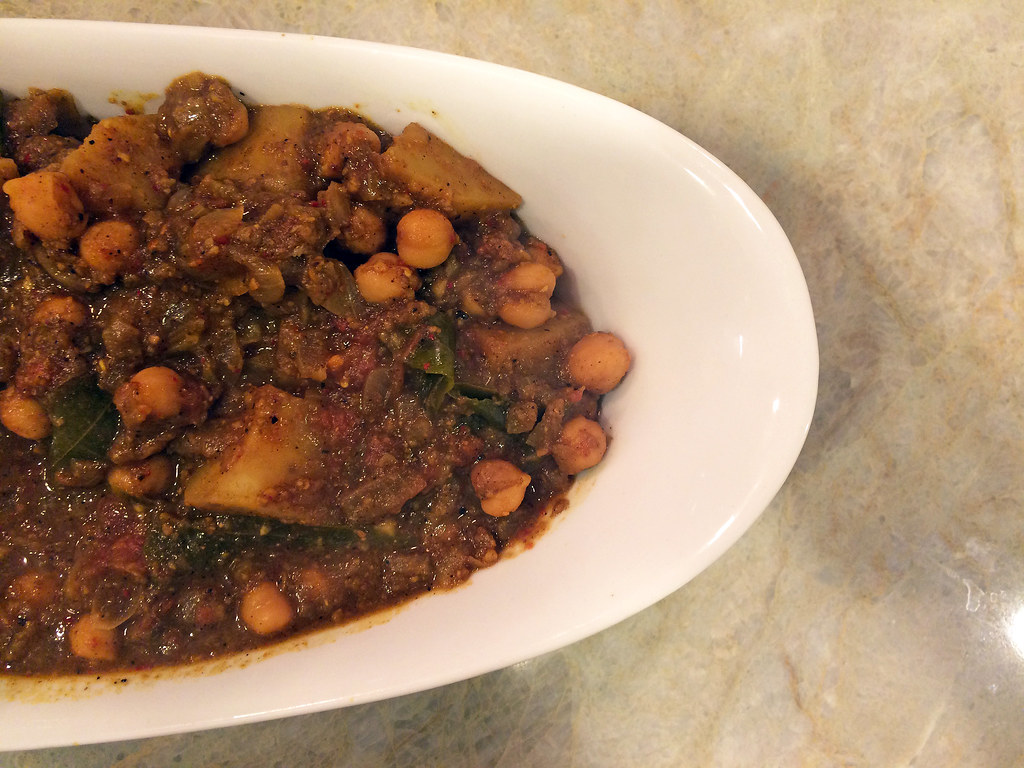What do you do when you have too many tomatoes? Make tomato curry. This summertime curry is my new surprise favorite — I had an excessive tomato haul and wanted to try something different than salad or tomato sauce. Spicy and savory and slightly sweet from ripened tomatoes’ natural sugars, this whole thing comes together in only a few minutes and is finished with a touch of creamy coconut milk.
If you never thought tomatoes could be the star ingredient in a curry, try this and see if you don’t change your mind. It’s perfect alongside heftier curry, some rice, and pickled things to make a perfect meal.

Ingredients:
2 tablespoons olive or vegetable oil
1/4 teaspoon fenugreek seeds
1/4 teaspoon mustard seeds
1 sprig curry leaves
1 cinnamon stick
1 onion, chopped
1 serrano chili, chopped
1 pound tomatoes, quartered
1 cup coconut milk
1 cup water
1/2 teaspoon cumin seeds
1 teaspoon ground corriander
1/2 teaspoon turmeric
1/2 teaspoon cayenne pepper powder
1 teaspoon brown sugar
1/2 teaspoon salt
2 teaspoons Maldive fish
1. Heat the oil in a pan over medium heat. Add fenugreek, mustard seeds, curry leaves, cinnamon, onion, serrano chili, and cook until golden, about 3 minutes. Add cumin, coriander, turmeric, cayenne pepper, brown sugar, salt, and Maldive fish and cook for another minute, being careful to not burn the mixture.
2. Add the tomatoes and cook for about 7 minutes, until they have softened. Add coconut milk and water, bring to a boil, and simmer until the liquid thickens.
3. Serve as a side curry to a main vegetable, fish, or meat curry alongside rice.




